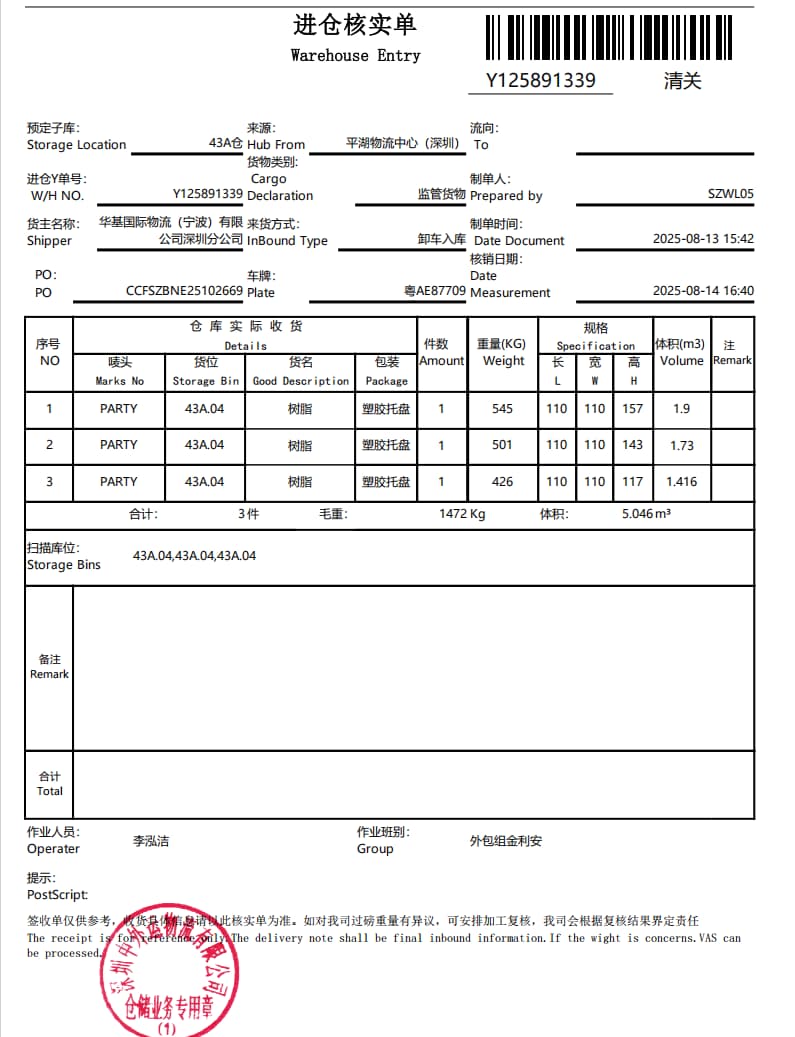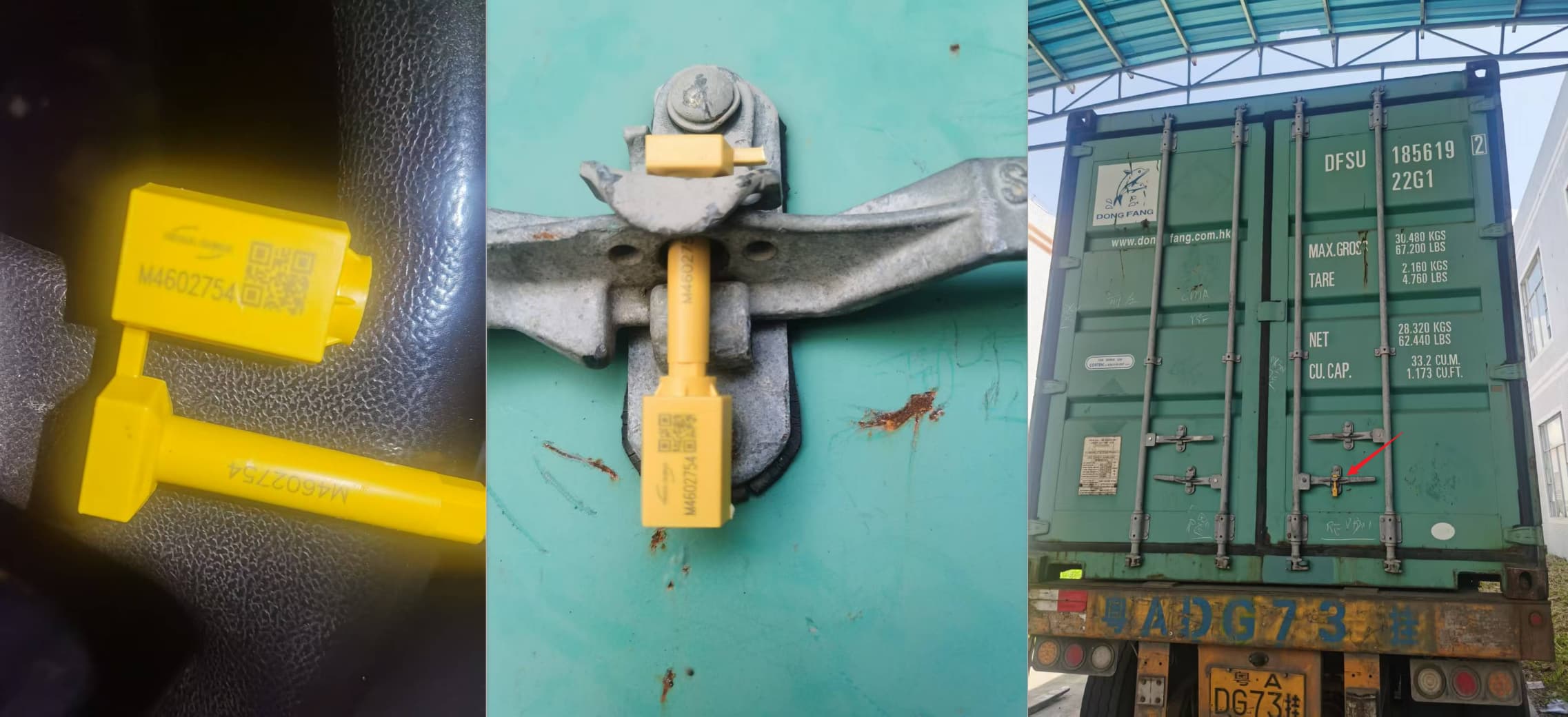How to Claim Cargo Insurance Compensation?
Cargo insurance claim process:
- Evidence Collection
- Necessary Document Preparation
- Submission of Claim Application
- Waiting for Insurance Company Processing
1.Evidence Collection
The most important part of cargo insurance claims is evidence collection. Below is the details for how to collect evidence based on different time periods and transportation methods.
From Factory to Port/Airport of Load
In this part, the most likely causes of cargo damage are traffic accidents, or loss/damage during loading and unloading at LTL logistics transfer stations. Evidence collection in this segment is simple and fast because when the goods enter the warehouse at the port/airport of departure, the staff will immediately count the quantity and inspect the external packaging. If there is loss or damage, they will immediately take photos and note the specific details of the loss or damage on the warehouse entry form, then notify the freight forwarder. If there is loss, the freight forwarder will immediately start to investigate the cause, location, and time of the loss. If there is cargo damage, the cargo insurance claim process begins.
 Warehouse Entry Form
Warehouse Entry Form
From Port/Airport of Departure to Port/Airport of Destination
Evidence collection at this stage is mainly the responsibility of the freight forwarder or carrier, so the cargo owner only just waiting for forwarder's update on the result.
-
Air Shipment
When air cargo arrives at the destination airport, the warehouse staff will count and inspect the goods according to the Air Waybill number and shipping marks, and notify the airline. If there is loss, the airline will contact the departure airport to check if there was any omission in loading. If the goods are confirmed lost and cannot be recovered, or if the goods are damaged, the airline will notify the freight forwarder or consignee and issue a loss/damage statement. The freight forwarder uses it to apply for insurance claims.
-
LCL (Less than Container Load)
When the goods are unloaded at the destination port warehouse, the warehouse staff will count and inspect the goods according to the Bill of Lading number and marks, and notify the freight forwarder. If there is loss, the freight forwarder will check with the departure port warehouse for any missing in loading. If the goods are confirmed lost and cannot be recovered, or if the goods are damaged, the freight forwarder will immediately start the insurance claim process.
-
FCL (Full Container Load)
For sea FCL, the container is usually sealed immediately after loading at the factory, and no one opens the container during transportation, so there is no partial loss during transit. The most likely causes for sea FCL during transportation are natural disasters or container vessel accidents leading to container loss or cargo damage, such as shipwrecks, fires, heavy seas causing container tilting, squeezing, deformation, etc. The shipping company will issue a statement if container loss or damage.
From Port of Destination (Airport) to Final Delivery Address
If there is cargo damage or loss at this stage, the consignee/cargo owner needs to cooperate in evidence collection and assist in the investigation.
-
Air Shipment and LCL
For air shipment and LCL from the destination port/airport warehouse to the final consignee's address/warehouse, it is usually delivered by LTL or courier. If the delivery distance is long, the shipment may pass through LTL or courier transfer stations; if the distance is short, it is delivered directly from the destination port/airport warehouse to the final consignee's address/warehouse. When the goods arrive at the consignee's address/warehouse, the driver/courier will provide a POD(Proof of Delivery) requiring the consignee to sign for confirmation. At this time, the consignee should immediately count the quantity and inspect the condition of the goods.
- If there is loss, the consignee should immediately ask the driver/courier to note the lost quantity on the POD and request them to try to find the lost goods and arrange a second delivery. If the loss is confirmed and cannot be found, the consignee should keep a copy of the POD or take a photo and contact the freight forwarder to report the lost goods information.
- If there is damage, the consignee should immediately ask the driver/courier to note the damage details on the delivery proof and immediately take photos and videos of the damaged goods, then contact the freight forwarder to report the cargo damage situation and provide the damage photos and videos.
-
FCL
FCL goods are usually delivered directly from the terminal to the consignee's address/warehouse, and no one opens the container during transit. When the driver arrives, the consignee should check that the container number and seal number match those on the bill of lading before opening the container for unloading. The seal is a one-time lock. If the seal is not damaged or altered, and there are missing goods, the consignee should contact the factory to check if there was any missing in factory.
If there is cargo damage, the consignee should immediately take photos and videos of the damaged goods, note the damage details on the POD, and then contact the freight forwarder to start insurance claim.
 Container Seal
Container Seal
2.Necessary Document Preparation
- Packing list (indicating damaged and lost goods)
- Invoice (indicating damaged and lost goods)
- POD(Proof of Delivery)
- Photos and videos of damaged goods
3.Submission of Claim Application
When cargo loss or damage occurs, immediately contact the freight forwarder and provide the necessary documents and loss/damage proof. The freight forwarder will contact the insurance company to initiate the claim application.
4.Waiting for Insurance Company Processing
After the insurance company accepts the claim application, it may take a week or longer to process the claim. During this time, the cargo owner should keep in touched with the freight forwarder to follow up on the claim progress.
Summary
Throughout the transportation process, the consignee/cargo owner should focus on evidence collection at the time of receipt and promptly hand it over to the freight forwarder for processing.
If you have any questions or needs regarding cargo insurance, please feel free to contact us.

